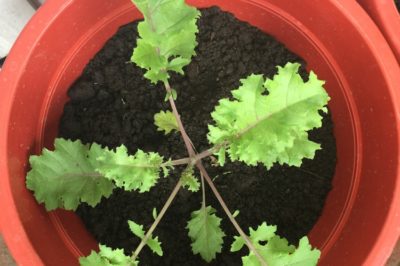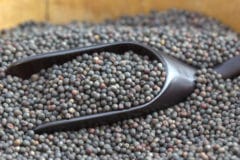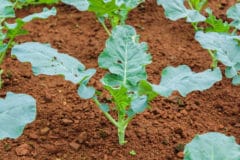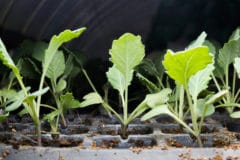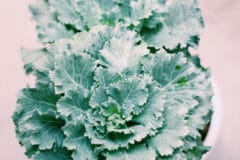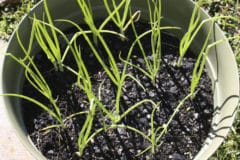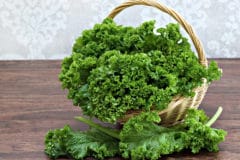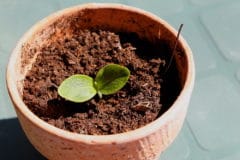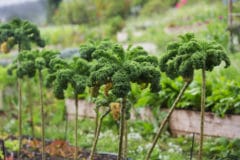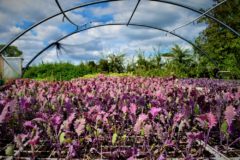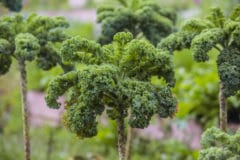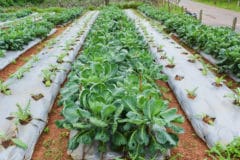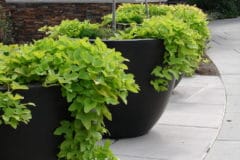Choosing the Number of Plants
To have a steady source of kale, you should have three to four plants per person if you plan to serve it regularly.
Spacing the Plants
Individual kale plants need containers that measure about 6 inches (15.24 cm) across. In larger containers, place the plants at the center of an 8 to 12 inch (20.32-30.48 cm) space.
Choosing Your Containers
Anything that gives the plants sufficient space, that can hold potting soil, and that provides good drainage can serve as a container, so long is it was never used to contain anything toxic or hazardous. Try these container ideas for starters:
- Clay pots
- Planters
- Two-liter bottles with the tops cut off and drainage holes punched in the bottom
- Large size cans, like coffee cans, with holes punched in the bottom
- Plastic or galvanized buckets or plastic or galvanized tubs with holes punched in the sides and bottom
- Polypropylene shopping bags
Choosing the Soil
When planting container gardens, you should use a sterilized potting soil rather than top soil. Potting soil is lighter than top soil. In addition, top soil can contain plant diseases and weed seeds. Choose a blend specifically for vegetables or vegetables and herbs. If you want to mix your own potting soil, kale prefers a loamy or sandy soil with 40 percent sand, 40 percent silt, and 20 percent clay and a pH between 5.5 and 6.8.
Choosing a Location
If you are growing your kale on a patio or balcony, place it in the warmest, i.e. the sunniest, location in the spring. In the heat of summer, move it to a partially shaded location or move it indoors when the temperature goes above 80°F (27°C). You can move your kale back outside when temperatures cool and leave it outside until temperatures drop below 20°F (-7°C).
Indoors, place your kale in a sunny location or use a grow light.
Kale needs at least six hours of sunlight a day. If you are using a grow light, you can place your kale wherever you can place your light.
How to Plant Your Kale
If you are planting seedlings, plant them with the stems perpendicular to the soil at a depth that allows the soil to support the seedlings without covering the lowest set of leaves.
If you are growing your kale from seeds, place the seeds 3 inches (7.62 cm) apart and cover them with ½ inch (1.27 cm) of soil.
Thinning Your Seedlings
The first leaves you see sprouting are not true leaves but the cotyledons that are part of the seed. These nourish the seedlings until the true leaves form. Wait until two or three sets of true leaves have developed and the plants are 4 to 5 inches (10.16-12.7 cm) tall before thinning them to 8 to 12 inches (20.32-30.48 cm) apart. When you thin your kale, you can transplant the seedlings to another container or use the leaves to season your cooking.
Caring for Your Kale
Watering
Keep the soil evenly moist to a depth of 1 inch (2.54 cm), but let the very top layer of the soil dry out between each watering. Your kale should receive 1-1 ½ inches (2.54-3.81 cm) of water per week. Don’t overwater though, because kale does not like soggy soil. If you are growing your kale outside, you may need to water more frequently if you have a hot, dry spell.
Fertilizing
Apply a water soluble or liquid organic fertilizer every 7-10 days.
Insect Pests
Covering your plants with tulle (fabric netting sold at fabric and craft stores) prevents moths and beetles from laying eggs that hatch into kale-devouring caterpillars. Bridal tulle is fine, but also potentially more expensive. It does, however, come in widths that would cover kale planted in large containers. Craft tulle is not as fine as bridal tulle and is also stiffer, but it is less expensive.
Slug and snail bait or diatomaceous earth sprinkled on the soil surrounding your plants eliminate problems with slugs.
Harvesting Your Kale
Your kale is ready to eat when the leaves are about the size of your hand. You should pick your kale from the bottom of the plant and always leave at least four leaves at the top of the plant to ensure continuing growth and future harvests.
